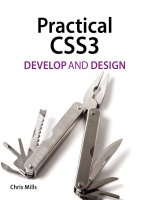Organization theory and design: Lecture 20
Bạn đang xem bản rút gọn của tài liệu. Xem và tải ngay bản đầy đủ của tài liệu tại đây (22.32 KB, 6 trang )
20
Organization Size
1
Pressure for Growth
•
•
•
•
•
•
•
•
•
In 1990s, Peter Drucker, declared that “the fortune 500 is over”
Yet every businessperson has the dream to take his/her company to
the fortune 500 list – to grow fast and to grow large
Sometimes this goal becomes more important than profitability
In 1997 $ 1.6 trillion worth of mergers took place worldwide, a new
era of “bigness” to control the resources and distribution channels
Many in the industry believe that firms must grow to stay
economically healthy. To stop growing is to stagnate
Example of BCG matrix, nobody wants to be a “dog”
To be stable means that customers have not got their demands
fulfilled or that competitors will increase their market share at your
expense
Greater size generates economies of scale, power, revenues
In addition growing organizations are vibrant, they attract more
people
2
Large vs. Small
•
•
1.
2.
3.
4.
5.
6.
How much to grow and how large to become?
LARGE organizations have the following
advantages:
Economies of scale
Global reach
Vertical hierarchy, mechanistic
Complex
Stable market
Organization men
3
Large VS Small Organizations
Small organizations:
1. responsive, flexible
2. Regional reach
3. Flat structure, organic
4. Simple
5. Niche market
6. Entrepreneurs
4
Small organizations
Current Trends:
• Since mid-1960s, most of the then-existing large
businesses have lost market share worldwide
• Today, 96% of exporters are small businesses
• Internet is a fertile ground for the growth of small
companies
• Rapidly growing service sector contributes to a decrease
in average organization size
• Percentage of employees working in large organizations
is constantly falling
• In pharmaceutical industry R&D in small organizations
has been much more effective, give example of vaccine
of hepatitis B
• personal involvement of employees in small
organizations encourages innovation, commitment and
5
employee motivation
Small organizations
Problem:
• Small companies grow fast and becomes big
Solution:
• Jack Welch: “big company/small company
hybrid” i.e. combining large resources and reach
of big companies with a small company’s
simplicity and flexibility (divisional structure)
• Another approach is called the front/back
approach, back for production and front end for
distribution
6









